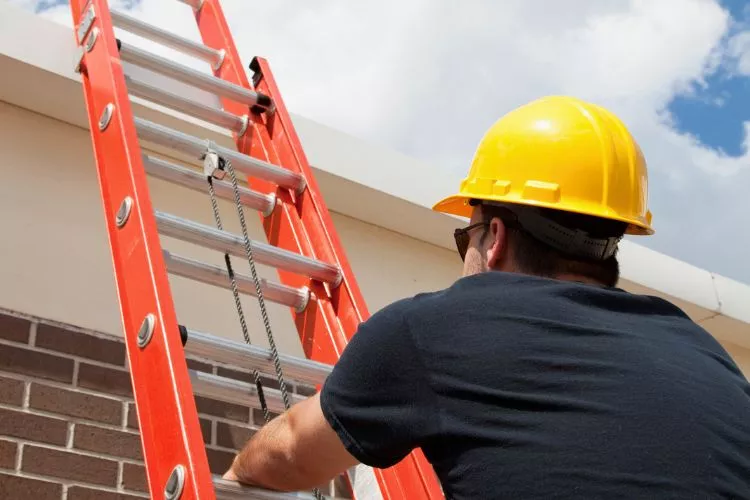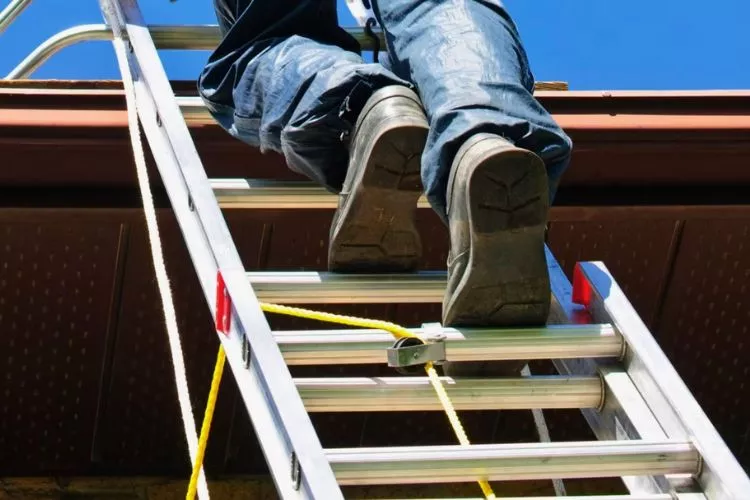In the realm of practical physics and home safety, the concept of the ladder angle rule holds significant importance.
This rule, often used by construction workers and DIY enthusiasts, involves the safe and efficient use of ladders. Applying simple trigonometric principles, it helps ensure that the ladder placed against a wall is stable and secure, minimizing the risk of accidents.

This article aims to discuss the essential aspects of the ladder angle rule, providing a comprehensive understanding of why and how it should be utilized.
Whether you’re a professional builder, a DIY homeowner, or anyone who uses a ladder, learning about this rule will enhance your safety and effectiveness. Get ready to glean insights that could potentially save you from precarious ladder-related accidents.
Quick Recommendations
The Ladder Angle Rule Explored
Exploring the ins and outs of the Ladder Angle Rule becomes a necessity for those who regularly use ladders. Woven into the fabric of practical safety, this rule involves the application of basic physics and trigonometry, enabling users to minimize accidents by drawing on the power of angles.

🪜 Understanding the Rule
In its essence, the Ladder Angle Rule is all about observing the perfect angle when placing a ladder against a wall.
The general consensus among experts recommends making a 75-degree angle with the ground – often understood in terms of the “4-to-1” rule: for every four feet of height you wish to reach, the base of the ladder should be one foot away from the wall or object it’s leaning on.
🪜 The Science Behind the Rule
Fundamentally, it’s all a game of forces. When you climb a ladder, the force of your weight acts downwards and the reaction force of the ground acts upwards. The angle at which you place the ladder dictates how these forces interact.
By adhering to the 75-degree angle rule, you ensure that the forces are balanced, thereby decreasing the risk of the ladder sliding or tipping over.
🪜 Importance of Adhering to the Rule
The key benefit of applying the Ladder Angle Rule is the enhanced safety it provides. Whether you’re painting a wall, washing windows, or clearing your gutters, adhering to this rule ensures your ladder maintains stability. Moreover, this rule isn’t just beneficial – it is critical to further prevent ladder-related incidents.
🪜 Applying the Rule in Real-Life Situations
In the real world, getting the perfect 75-degree angle can be challenging. However, there are tools available to assist, such as smartphone apps that utilize built-in phone inclinometers to measure angles.
Another easy way to approximate this angle is to stand with your toes touching the base of the ladder and extend your arms straight out. If your fingertips just reach the rung at shoulder height, the angle is about right.
What is the 4 to 1 rule for ladders?
The “4 to 1 rule” is a simple guideline used for the safe positioning of ladders. It suggests that for every four feet of ladder height, the base of the ladder should be positioned one foot away from the wall or object it’s leaning against.
So, for instance, if the ladder’s height is 12 feet, the base should be 3 feet away from the object. Adopting this rule can efficiently balance the load and minimize the risk of the ladder toppling over.
What is a safe angle for a leaning ladder?
The safe angle for a leaning ladder is generally considered to be around 75 degrees.
This is derived from the “4 to 1” rule and helps to provide stability and balance.
This angle ensures a reasonable equilibrium between the downward force exerted by the weight of the person climbing and the upward reaction force of the ground, thereby reducing the chances of slipping or tipping.

What is the best angle for climbing a ladder?
The best angle to adopt for climbing a ladder is roughly 75 degrees. This is an optimum angle as it keeps the ladder stable, even when bearing a climber’s weight. It’s calculated using the “4 to 1” rule, implying that for every four feet of height to be climbed, the ladder’s base should be one foot away from the wall.
Can a ladder be used if the side slope is 20 degrees?

Using a ladder on a side slope of 20 degrees can be quite risky and is generally discouraged. The slope could impair the balance of a ladder, making it unstable.
Most safety guidelines suggest that ladders should ideally be used on level ground.
If it’s absolutely necessary to use a ladder on a slope, precautions such as using leveling devices or securing the ladder with stakes or sandbags should be undertaken.
Is the best angle to position a ladder 80 degrees?
Placing a ladder at an 80-degree angle is typically not recommended. It’s steeper than the recommended 75 degrees and tends to make the ladder more unstable, especially when climbing.
Following the “4 to 1” rule offers an approximate angle of 75 degrees, which provides the perfect balance between stability and easy climbing, thereby minimizing the risk of accidents.
Conclusion:
The Ladder Angle Rule is a practical and highly significant safety guideline that has an enormous impact on the safe usage of ladders. While it seems a simple concept, applying this rule makes all the difference between a secure climb and a potential accident.
From home DIY enthusiasts to professional construction workers, adherence to this rule can ensure a safer working environment.
By familiarizing oneself with concepts like the “4 to 1” rule and understanding the ideal ladder angle, one can reduce the risks associated with ladder usage.
In a nutshell, the ladder angle rule serves as a quintessential bridge between basic physics and real-world safety applications – a bridge that ensures safety for all who dare to scale heights.





